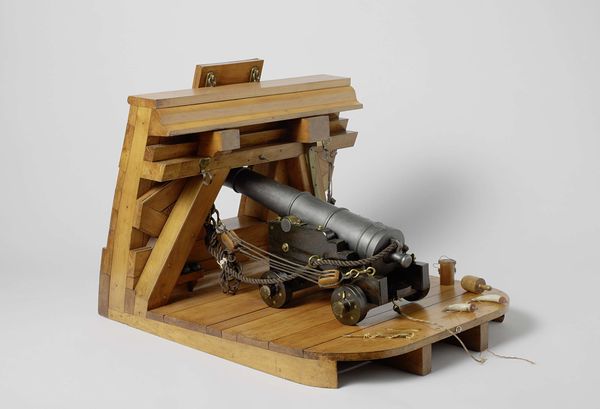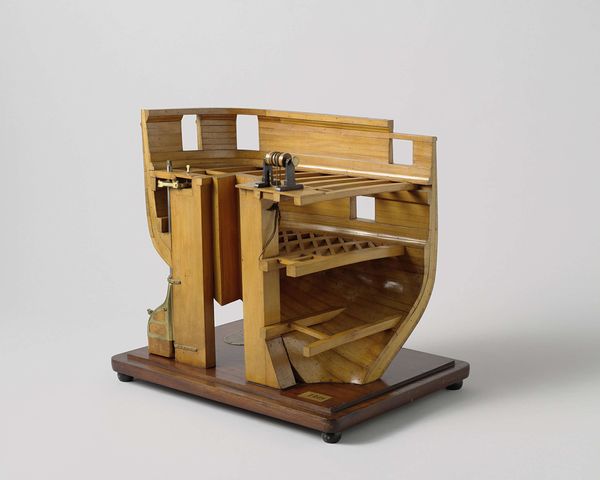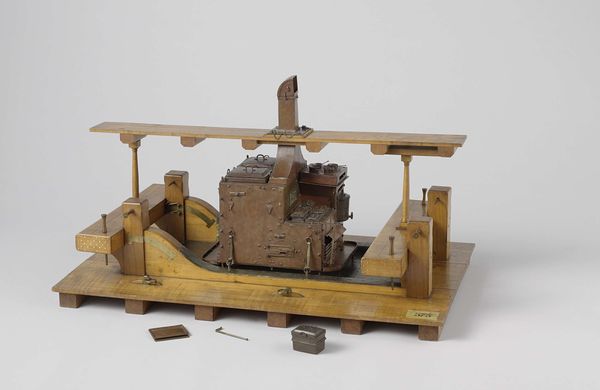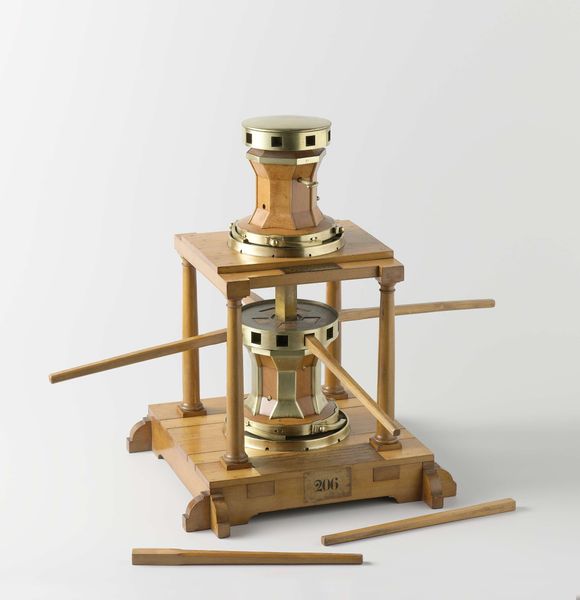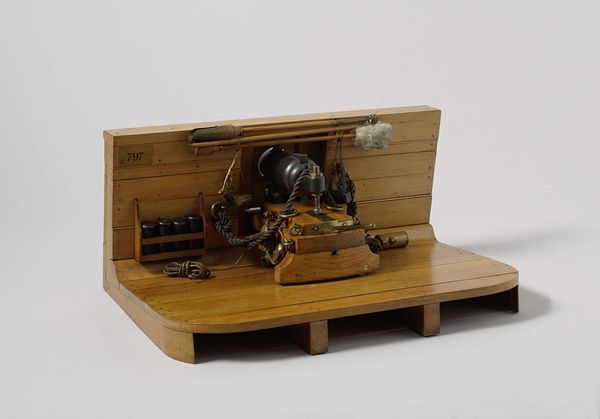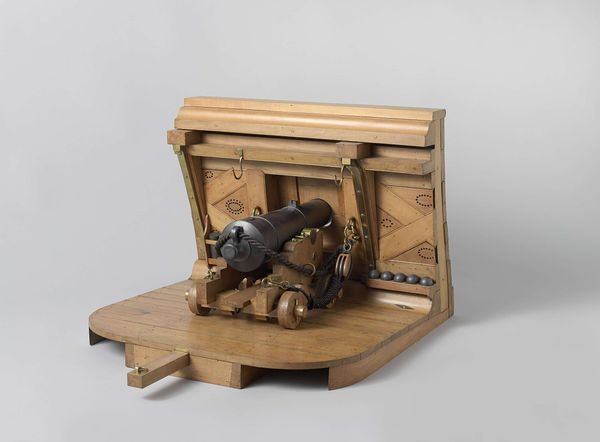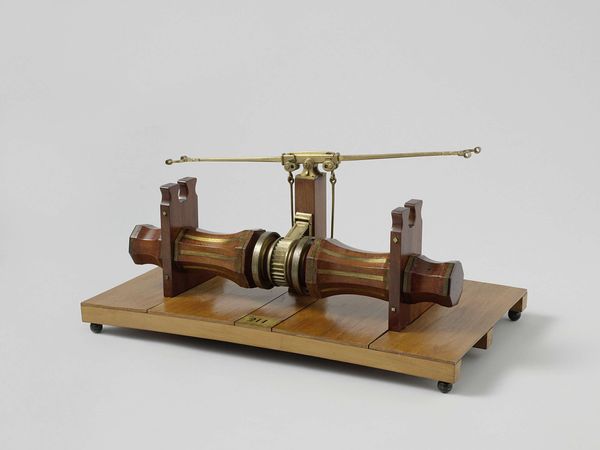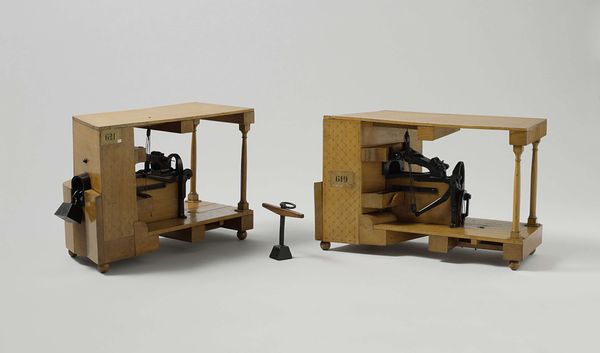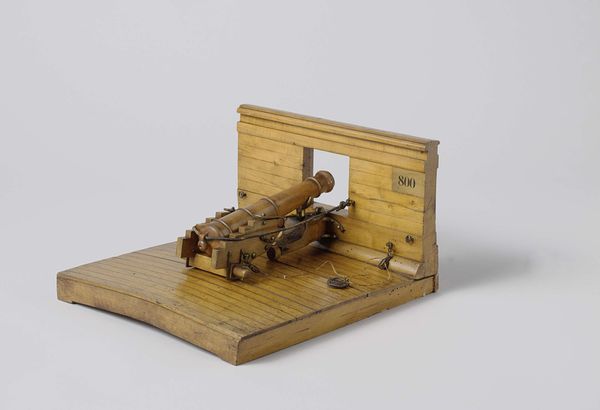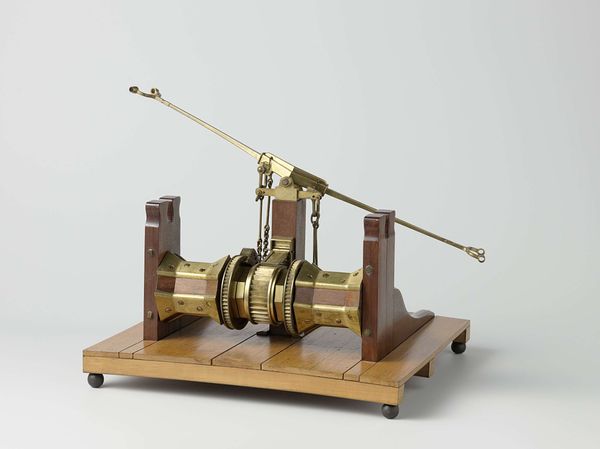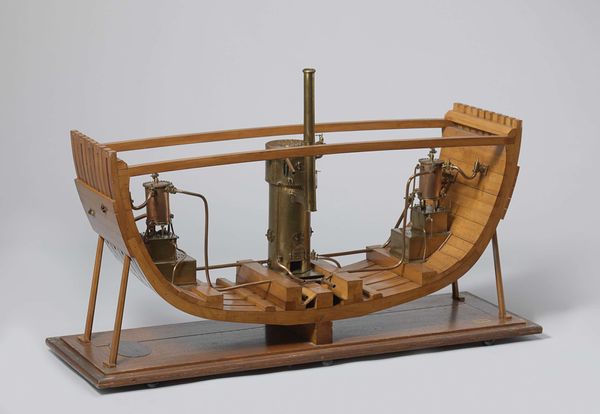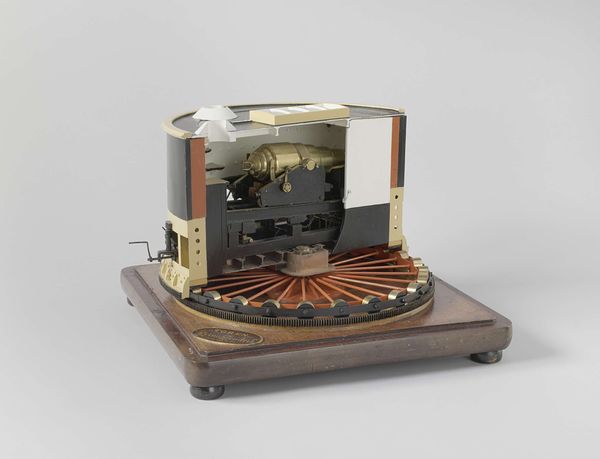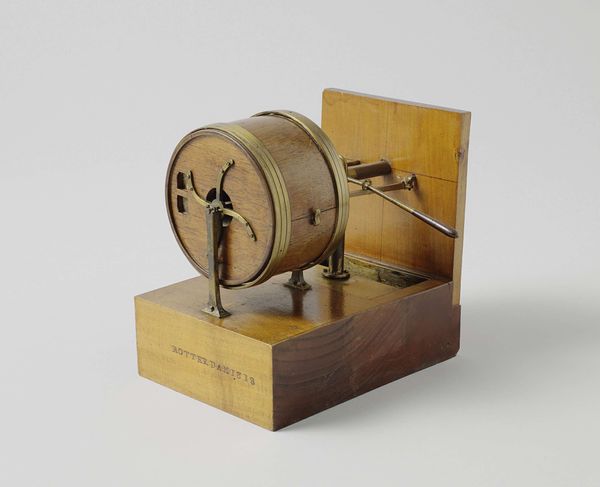
metal, sculpture, wood
#
3d model
#
3d printed part
#
metal
#
virtual 3d design
#
architecture mock-up
#
3d shape
#
prop product design
#
sculpture
#
metallic object render
#
wood
#
mechanical engineering model
#
architecture render
#
product render
Dimensions: height 49 cm, width 70 cm, depth 53 cm
Copyright: Rijks Museum: Open Domain
Curator: Here we have the "Model of a 30-pounder carronade in a battery Vlissingen," crafted in 1838 by Rijkswerf Vlissingen. It combines both metal and wood to depict a stationary naval cannon. Editor: Immediately, I’m struck by its strangely peaceful vibe, despite what it represents. It feels like a perfectly arranged dollhouse diorama of destruction! All that gleaming wood! Curator: The visual precision is certainly arresting. Carronades like this 30-pounder were originally designed to be shorter and lighter than traditional cannons, allowing for easier handling on ships. Scale models like these provided valuable insights into naval weaponry and battery construction. Editor: It's the layers of visual storytelling here that fascinate me. On one hand, the model shows a precise depiction of maritime aggression, and the mechanics of naval bombardment. But as a replica, isn't there a strange sort of detachment? Almost like it’s more concerned with aesthetic principles than functional horror. Curator: Exactly! The battery, the wooden components…all speak to both functionality and an underlying aesthetic order. We see the rational design but feel the implied power, echoing eras when naval dominance dictated world events. Consider, too, how the cannon, the very engine of violence, becomes miniaturized and inert, transformed into an object of study. Editor: I love how something initially created for such aggressive intent can eventually become an object prompting calm reflection, almost…reverie. It highlights the strange journey of objects. Today, the carronade stands as an intriguing marker of both technical prowess and a bygone age of maritime strength, like a stage-set relic. Curator: Absolutely, an artifact transformed. It encourages us to reflect on how technological might and human ambition evolve in both material and symbolic forms. Editor: I’ll definitely carry its oddly tranquil image with me! Curator: Agreed. Its symbolic presence extends far beyond its tangible dimensions, inviting multilayered readings of power and fragility.
Comments
rijksmuseum about 2 years ago
⋮
The carronade was invented by the Carron ironworks in Scotland. In English, the weapon was commonly known as a ‘smasher’, owing to its devastating power at close range. Thanks to its modest dimensions and sliding mount to absorb recoil, this short cannon could also be deployed on smaller ships. The model displays all the requisite accessories: an ammunition rack, powder horns, pouch-topped powder kegs, shrapnel shells and cartridge cases.
Join the conversation
Join millions of artists and users on Artera today and experience the ultimate creative platform.
